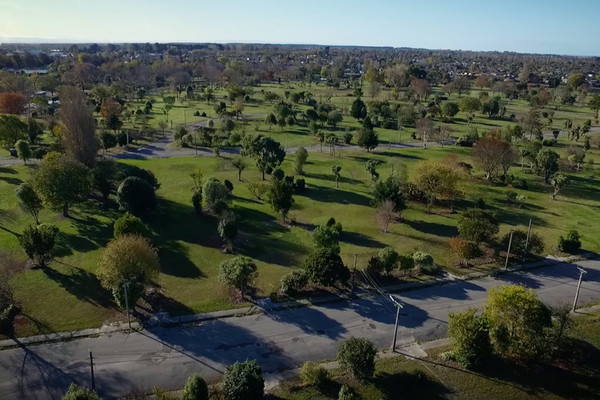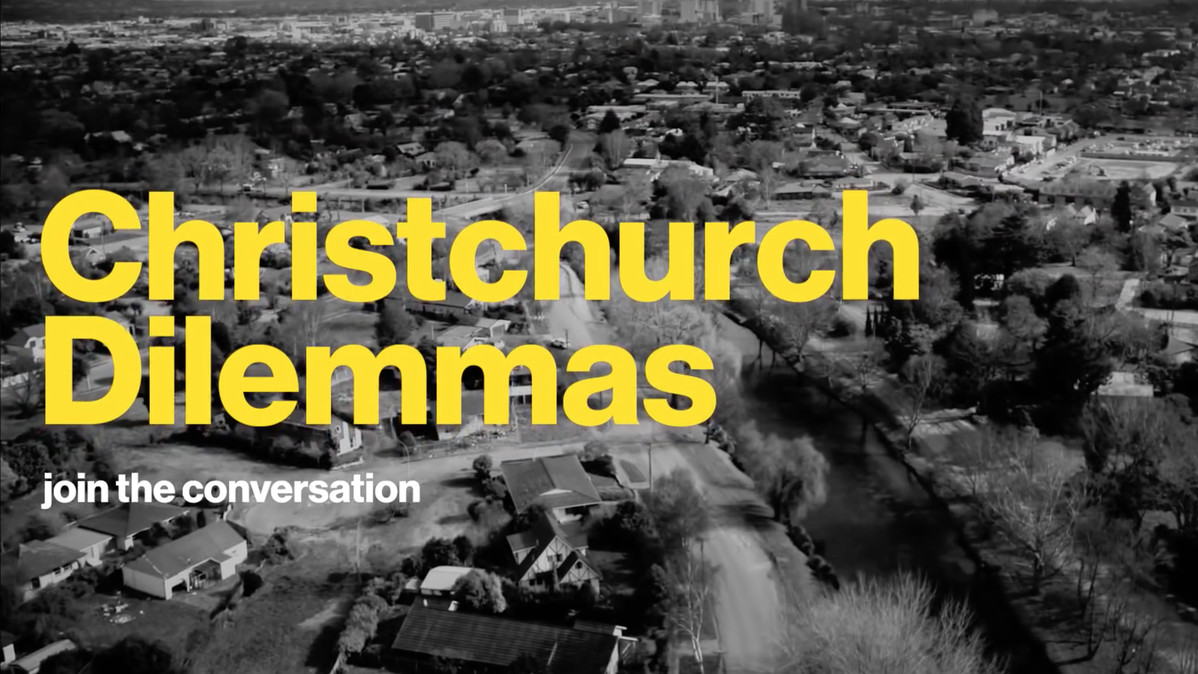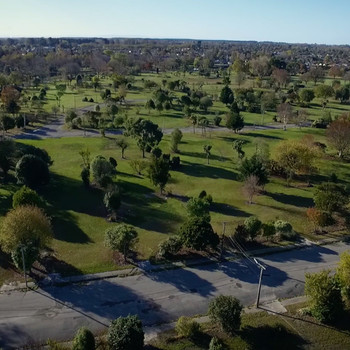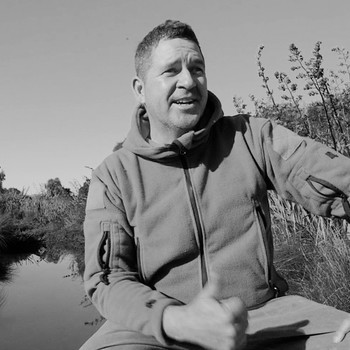1/. Red Zone — What is its future?
View all2
Next2/. Mental Health — Do we have a crisis? Play
Share
Twitter FacebookIn the heart of Christchurch, a 440 hectare tract of land awaits decisions for its future. So what will happen to the land cleared by the earthquakes? And who gets to decide? Christchurch Dilemmas investigates the possibilities for the future of the red zone.
Read moreEquating to 439 rugby fields, with 5000 homes demolished, the red zone is an enormous tract of now-vacant land stretching through the centre of Christchurch. Bought en masse by the government when earthquakes rendered the housing on it broadly un-liveable; five years on, the city is facing up to what the Red Zone’s future will be.
Ripe with potential and possibility, communities are beginning to come up with ideas for how to use the land that has unexpectedly been wiped clean. Or not precisely clean. The land here still bears the marks of suburban homes: quarter acre borders still traced by flower beds, trees and the occasional tyre swing, even if the houses are vanished. Some community groups are advocating for an “urban forest” development that supplements the existing growth with native planting.
Denise Ford is part of Avon Ōtākaro Forest Park, a group advocating for urban and native forest regeneration. There’s already an amazing amount of native trees in the Red Zone, that were in people’s gardens. The areas we’re looking after in the red zone we’re seeing native regeneration of seedlings - so nature will do some of this itself if we let it.”
For local tangata whenua, one of the priorities is returning the river red zone to its role providing a source of food and resource for local iwi. “Ko au te wai, ko te wai ko au - I am the water, the water is me, is an old whakatauākī,” says Nigel Harris of Ngāi Tūāhuriri.
“This place was extremely significant to us for mahinga kai, where we procured and produced our food. It engendered family ties, it was connection to other hapu, and it actually acted as a fridge for us.”
Te Marino Lenihan is part of the Mahinga Kai project, and wants the thinking to change to plans that cultivate both the land and the water.
“We’ve been through 200 years or whatever of the river being treated as a waste pipe. Hopefully that thinking is buried now, and we’ve got this great opportunity of space around a waterway to think of the future.”

Sports proponents at East Lake Trust want to see a 2.25 kilometre long flatwater sports lake established, for swimming, rowing and racing. At Water For Life, an eco-tourism project dubbed “Eden New Zealand,” modelled off the Eden Project in the United Kingdom.
Evan Smith, co-ordinator of the Avon-Ōtākaro Network which advocates for community input into the future of the red zone, says the process doesn’t need to be competitive, and there is room for several of the the projects to succeed.
But who ultimately gets to decide? The responsibility for consulting on the red zone lies with Regenerate Christchurch, the co-run central government and council body developed to replace CERA in 2015. “The people are very much going to have a say,” says Andre Lovatt, Regenerate’s new chair.
“Big business and central government are not driving this process - Regenerate Christchurch is driving this process,” he says. “We will be accountable to the people.”
But exactly how much power Regenerate has to make final decisions remains vague. Responsibility for actually delivering the city’s anchor projects belongs to crown-owned company Ōtākaro Ltd. Ōtākaro represents the Crown's interests in the residential red zone - and has previously said the Government would be looking to make a return on the land - possibly through redevelopment.
For now, however, the page for the red zone is largely blank. So what are the ideas at the forefront of the debate? And what do you want to see?



Top Comments
Jeffrey Paparoa Holman 9 years, 4 months ago
Gerard, I haven't felt so inspired and full of hope about the city since, well, forever! At last, our voices, our people! E hoa, kia a kaha, kia ū, kia manawanui! E te rangatira, tēnā koe!
Share
Twitter FacebookCris Fulton 9 years, 4 months ago
Would love to see a community farm with organic produce and maybe a cheaply priced restaurant with locally produced food. Kids from the schools could get involved and have people teach them about agriculture. A few livestock wouldn't go amiss. What better future for The Garden City than to feed its residents with organic, cheap locally produced food.
Share
Twitter FacebookRob Stowell 9 years, 4 months ago
Watched them all last night - great ideas. I'm strongly inclined away from the 'grand' (Eden thingee - and even the watersports park, though that could be good) towards the low-key sustainable, low impact. Mahinga Kai shows how far away we've moved from anything like a food-basket. Good idea to think about.
Share
Twitter Facebook